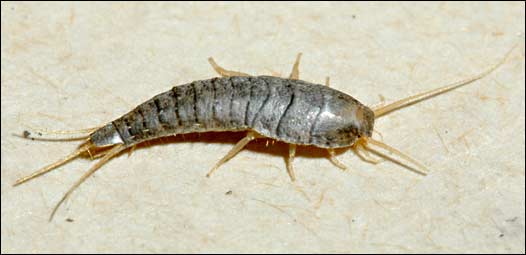Classification
Lepisma saccarina
Domain: Eukaryota
Kingdom: Animalia
Phylum: Arthropoda
Class: Insecta
Order: Thysanura
Family: Lepismatidae
Genus: Lepisma
Species: Saccharina
Domain: Eukaryota-Includes
animals, plants, and protozoan. Eukaryote's are believe to
have developed when a larger bacteria engulfed a type of aerobic
bacteria, giving rise to mitochondria and chloroplasts
(
Kingdom: Animalia-This is the metazoans, includes every animal on planet earth. These are defined as multi-cellular and heterotrophic. There are a wide variety of metazoans, like sea sponges all the way to human beings (University of Buffalo).
Phylum: Arthopoda- Arthopods are
invertebrates with segmented bodies, and jointed legs.
 There are many different classes like the arachnids and insects
(University of Edinburgh).
There are many different classes like the arachnids and insects
(University of Edinburgh).
Class: Insecta-Arguably the most diverse class of animals on the Earth. Common traits in this class include; chitinous exoskeleton, 3 body segments (head, thorax, and abdomen), 3 pairs of appendages, compound eyes, and one pair of antennae. Most insects are terrestrial, but there are a few species that live in a marine enviroment (University of Edinburgh).
Order: Thysanura- Known as the "tassel tails" because of the triplet of caudal filaments, this order is best known for containing Silverfish and Firebrats (University of Edinburgh).
Family: Lepismatidae- Includes over 200 species, Lepismatids are dorsally flattened and generally are scavengers (Sturm 2009).
Lepisma saccarina was discovered by Carl Linnaeus in 1758. The Latin name refers to the silverfish's diet of polysaccharides, which are starches and sugars. The common name of silverfish refers to it's silver and blueish color, and also it's movements resemble that of a fish (Lasker 1957).
